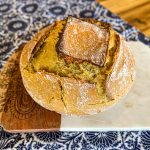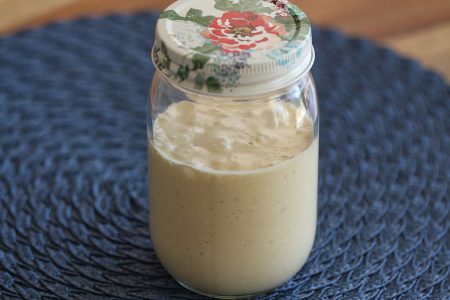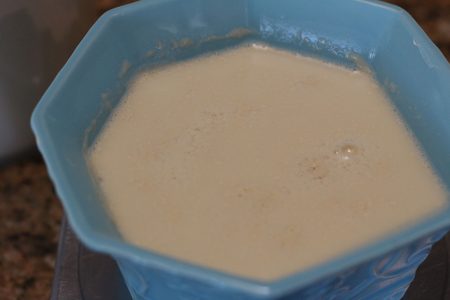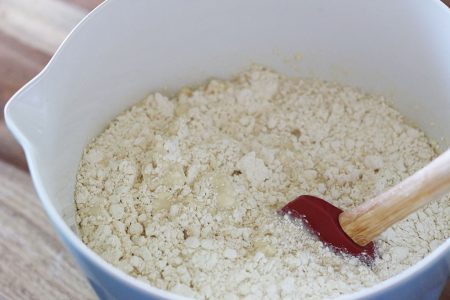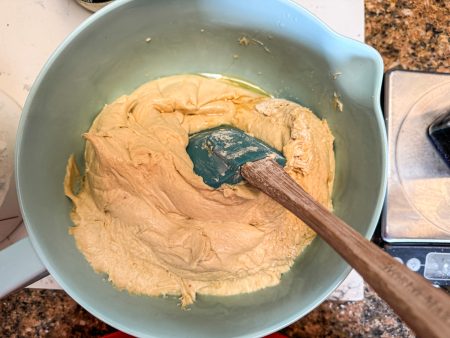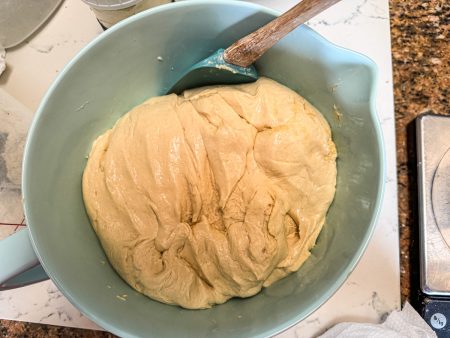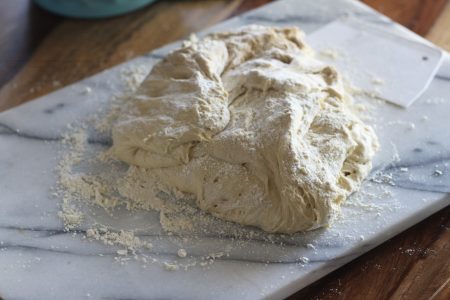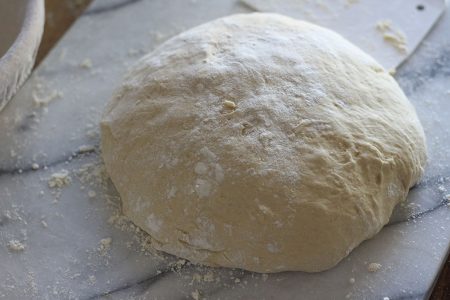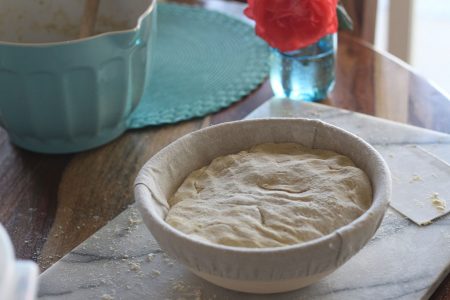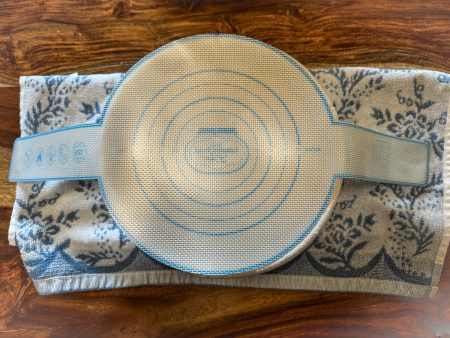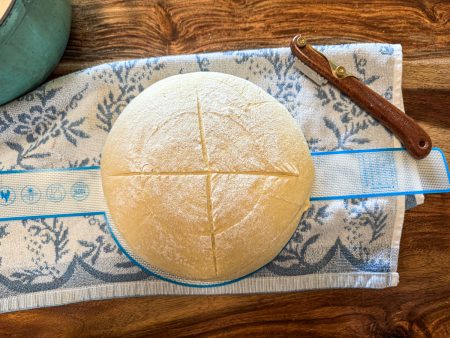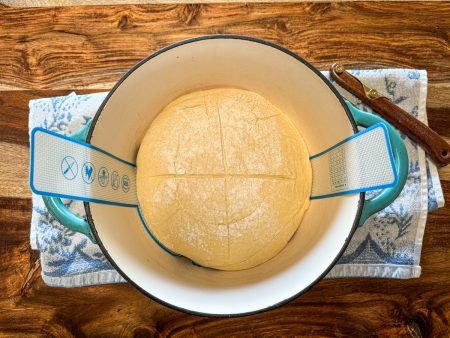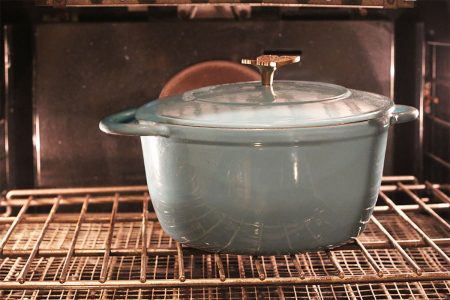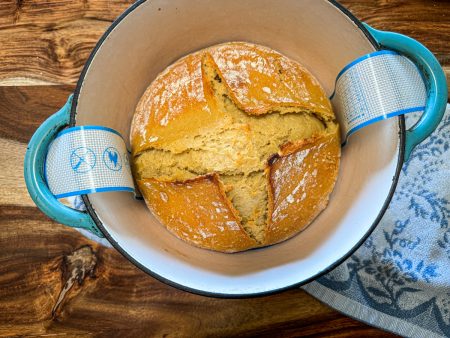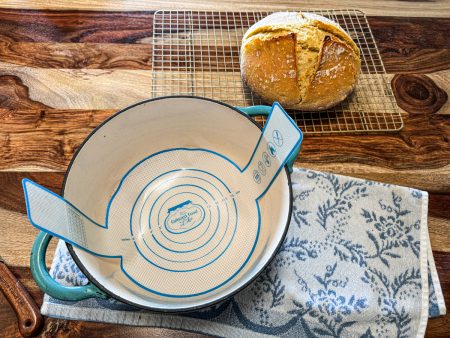Einkorn Sourdough Bread
Einkorn wheat is the most ancient species of wheat. So many people who are gluten intolerant thrive on einkorn bread. Modern wheat has been crossed with two different goat grasses. Goat grasses contain the D genome, which is the source of most gluten intolerance. Einkorn does not contain this troublesome D genome, only the A genome, and most testing for gluten intolerance is based on the D genome. You'll need a few things that make a huge difference in how the bread turns out. I highly recommend using a 5 Quart Dutch Oven - a roaster pan or deep casserole dish with a lid will work too. A dough scraper is my new favorite tool while working to fold and knead my bread. You'll also need a Kitchen Scale for measuring all ingredients. I have found that my cup of flour and your cup of flour can vary greatly, and will affect the outcome. I promise you this bread will be worth it. This has made a huge difference in my bread making and it will help you too.
Servings: 1 loaf
Equipment
- Banneton Proofing Basket optional but really helpful
- Bread Lame for scoring
- Bowl Scraper for getting the dough out of the bowl
Ingredients
- 2 cups water, warm (472 grams)
- ¼ cup Einkorn Sourdough Starter (60 grams) Must be bubbly! You can purchase this starter from me or make your own.
- 6 cups Einkorn All-Purpose Flour (720 grams) or Einkorn Whole Wheat Flour (696 grams)
- 1½ teaspoons Celtic Sea Salt (9 grams)
Instructions
- You need to make sure your sourdough starter is bubbly and ready to go. If it has not been fed recently, take a few spoonfuls of sourdough starter from your fridge and give it that much flour and water and let it ferment for 4 - 8 hours. Here is more help for a bubbly sourdough starter.
- Add the bubbly sourdough starter and warm water to a ceramic bowl. Mix them together with a whisk until well combined.
- Add the flour and salt to the sourdough mixture and combine together with a stiff spatula to incorporate the flour. The dough will be sticky.
- Once the dough is mixed and in the bowl, and using an oiled spatula, I pull back the dough from the bottom of the bowl. Then, place a small amount of oil in the bottom of the bowl.
- Roll all sides of the dough in the oil to help with the stickiness. Then cover the bowl with plastic wrap and let rise for 10-15 hours or until the dough has risen or doubled. See Note
- Flour a work surface and your hands. Place dough onto a floured surface. Fold the dough in half and then again into thirds. (Using a dough scraper is recommended.)
- Flour surface again if the dough starts to stick, and form into a round bowl shape. Generously flour the top of the dough.
- Line an 8-inch bowl with a towel and dust generously with flour. A Banneton Proofing Basket works great! Make sure your hands are still floured and pick up the dough and place it in the bowl with seam side up. Cover the bowl and let it rest for 30 to 60 minutes. In the meantime, preheat your oven to 450° F.
- Cover your bowl with a sourdough sling or a piece of parchment paper. Invert the bowl to allow the dough to release onto the sling or paper.
- With a bread lame or small razor blade or serrated knife, score the bread with four slashes.
- Pick up the sling or parchment and carefully place your bread in the pot. I usually fold in the arms of the bread sling.
- Place the lid on the pot and place in the oven for 40 minutes at 450° F. Then remove the lid and continue baking for 5 -10 minutes longer to darken the bread.
- You can test your bread by inserting a thermometer two inches into the center. It should be 205° - 210° F when it's done. Then, take the bread out of the pot and place on a wire rack until cooled.
- This bread is best if eaten within 2-3 days. If it's longer than that, you can store it in a bread bag or freeze it.
Video
Notes
If the dough is too sticky, here is what I suggest. Once the dough is mixed and in the bowl, I put a small amount of oil in the bowl, and spatula and then roll all sides of the dough in the oil. The dough readily absorbs excess oil without any adverse effect on its consistency when either raw or baked.
www.CulturedFoodLife.com
